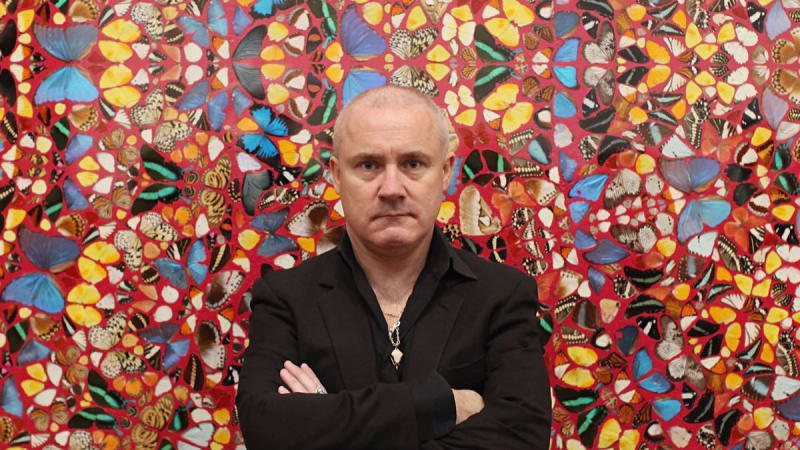Damien Steven Hirst is an English artist and art collector.
Born in Bristol, England in 1965 and winner of the Turner Prize in 1995, Damien Hirst is one of Britain's most iconic contemporary artists. Hirst graduated from Goldsmiths College, University of London. In his second year at Goldsmiths, he was the main convener of the "Freeze" independent student art exhibition in a disused warehouse in Surrey Docks, London. This exhibition brought many new artists to the fore, including Hirst, and was the start of the YBA (Young British Artists) art collective.
One of the world's richest and most influential contemporary artists, Hirst has been exploring the complex and delicate relationship between art, religion, science, life and death. Influenced by Marcel Duchamp, Hirst often creates installations using readymade objects. He has cut up, reconstituted and soaked dead animals in formalin (The Physical Impossibility of Death in the Mind of Someone Living, 1991), glued dead butterflies to the canvas with glossy paint (Omniscience, 2007) and even encrusted male skulls with diamonds (For the Love of God, 2007). These landmark artworks are visually powerful and profoundly metaphorical, prompting the viewer to confront inescapable death and reflect on the existence of life.
Hirst is also fascinated by colour. "Spot Paintings" is one of his most widely known series of artworks. Hirst combines random and non-repetitive coloured spots in a regular grid form, showing the perfect harmony and interaction between the individual colours (LSD, 2000). Hirst says: "I believe all painting and art should be uplifting for the viewer... I love colour. I feel it inside me. It gives me a buzz." In the Medicine Cabinets series, represented by Lullaby Spring, Hirst uses colour as a way of exploring the truths of life. His sculptures of pills are arranged as coloured dots, a metaphor for the fragility of life and the futility of human flight from death.

